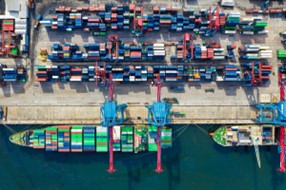
Understanding the Impact of Procurement Decisions on Supply Chain Health
Procurement is an essential component of supply chain management. It involves acquiring goods and services from external sources, significantly influencing a company’s operational efficiency and overall supply chain health. A healthy supply chain ensures simple operations, timely deliveries, and satisfied customers. In this article, we will go into how procurement decisions impact the supply chain and provide unique tips for businesses to optimise their strategies effectively.
The Role of Procurement in Supply Chain
Procurement determines the quality, cost, and timeliness of the materials and services acquired. Furthermore, its functions include supplier selection, contract negotiation, purchase order processing, and supplier performance management. With this in mind, procurement decisions directly affect the entire supply chain’s efficiency and effectiveness. A well-executed procurement strategy ensures that quality materials are sourced at competitive prices, delivered on time, and meet the company’s requirements, thereby maintaining the supply chain’s robustness.
Strategic Sourcing
Strategic sourcing is a proactive procurement approach focusing on long-term supplier relationships and overall value rather than immediate cost savings. As a matter of fact, strategic sourcing involves a systematic process of analysing an organisation’s spending patterns, identifying potential suppliers, and evaluating their capabilities. The steps in strategic sourcing include demand analysis, market research, supplier evaluation, contract negotiation, and continuous improvement. When adopting strategic sourcing, companies can achieve better cost management, improved quality, and enhanced supply chain health. This approach also allows businesses to mitigate risks by diversifying their supplier base and establishing strong partnerships with key suppliers.

Focus on long-term supplier relationships and value rather than just immediate cost savings to enhance your overall procurement strategy.
Also, your company might need to relocate, as it allows for faster response times to market demands, reduced lead times, and improved customer satisfaction. For this reason, you should establish strong relationships with movers to achieve this flexibility. Movers provide transportation and flexible storage solutions, enabling businesses to make logistics operations easier and adapt swiftly to changes in supply and demand. For example, AmeriSafe Moving Services is a prime example of a reliable moving broker that businesses can trust. They will connect you with professionals who can secure handling, timely deliveries, and excellent customer service. In contrast, using unreliable movers can lead to disruptions, increased costs, and damaged goods, negatively impacting your business.
Supplier Relationships
Healthy supplier relationships are essential for a resilient supply chain. Effective communication and collaboration with suppliers ensure timely deliveries, quality products, and flexibility in responding to market changes. To build strong supplier relationships, companies should focus on transparency, mutual trust, and regular performance evaluations. In contrast, poor supplier relationships can lead to delays, quality issues, and increased costs, negatively impacting the supply chain. Therefore, investing in supplier relationship management is essential for maintaining a robust and reliable supply chain.
Risk Management in Procurement
Procurement involves various risks, such as supply disruptions, quality issues, price volatility, and compliance challenges. Identifying and implementing strategies to mitigate these risks is important for maintaining the supply chain. Another key point is that companies should develop a comprehensive risk management plan that includes supplier risk assessments, contingency planning, and diversification strategies. By proactively managing procurement risks, businesses can ensure continuity of supply, reduce vulnerabilities, and enhance the overall resilience of their supply chain.

Monitor supply chain health for the best optimisation.
Sustainability and Ethical Sourcing
Sustainability and ethical sourcing are increasingly important in modern procurement practices. Sustainable procurement focuses on acquiring goods and services with minimal environmental impact and promoting social responsibility. Ethical sourcing ensures suppliers adhere to fair labour practices, safety standards, and ethical business conduct. Besides, companies can demonstrate their commitment to sustainability by obtaining certifications and complying with international standards such as ISO 20400 (Sustainable Procurement) and Fair Trade certification. Adopting sustainable and ethical sourcing practices enhances the supply chain and strengthens a company’s reputation and customer loyalty.
Technology in Procurement: Leveraging Digital Tools
Adopting digital tools and technologies in procurement can significantly improve the supply chain. Procurement technologies such as e-procurement platforms, supplier management systems, and data analytics tools make procurement processes easier, enhance visibility, and improve decision-making. As an illustration, e-procurement platforms automate purchase orders, invoicing, and payment processes, reducing manual errors and improving efficiency. Supplier management systems provide real-time insights into supplier performance, enabling better risk management and collaboration. Data analytics tools help analyze spending patterns, identify cost-saving opportunities, and predict demand trends.
Cost Management: Balancing Quality and Expenses
Effective cost management is essential for maintaining a healthy supply chain. Companies must balance the need to minimise expenses with the requirement to maintain quality. In short, cost management strategies in procurement include:
- Negotiating favourable terms with suppliers.
- Consolidating purchases to achieve volume discounts.
- Implementing cost-saving initiatives such as lean procurement practices.
However, it is essential to avoid compromising quality for cost savings, as poor-quality materials can lead to production delays, increased rework, and customer dissatisfaction. Therefore, a balanced approach to cost management ensures that companies achieve financial efficiency without jeopardising the supply chain.
Data-Driven Decision Making
Data-driven decision-making in procurement involves using data analytics to inform procurement strategies and decisions. Hence, data analytics tools provide valuable insights into spending patterns, supplier performance, market trends, and demand forecasts. When analysing this data, companies can make informed decisions that optimise procurement processes, improve supplier selection, and enhance overall supply chain health. Tools and techniques for data analysis include spend analysis, supplier performance dashboards, and predictive analytics. Embracing data-driven decision-making enables companies to identify inefficiencies, mitigate risks, and continuously improve their procurement practices.

Adopt digital tools and analytics to streamline procurement tasks, improve decision-making, and boost overall supply chain efficiency.
Continuous Improvement: Adapting and Evolving Procurement Practices
Continuous improvement is essential for adapting and evolving procurement practices to meet changing business needs and market conditions. Similarly, companies should implement processes to track and measure the effectiveness of their procurement strategies, identify areas for improvement, and implement changes as needed. Methods for continuous improvement include regular performance reviews, supplier audits, and feedback mechanisms. When fostering a culture of continuous improvement, companies can enhance their procurement practices, maintain the supply chain, and achieve long-term success.
Summary
Procurement decisions significantly influence supply chain health. Strategic sourcing, strong supplier relationships, risk management, sustainability, technology adoption, cost management, and data-driven decisions are essential for a robust supply chain. Implementing these practices leads to optimised procurement strategies and long-term success.
IoSCM procurement courses are available at a range of levels to support every stage of your career and further the duties and responsibilities of your purchasing department. From procurement training for beginners (covered in Levels 2-3) and advanced purchasing training courses (Levels 5-7); there’s online training for procurement professionals of all skill levels.

